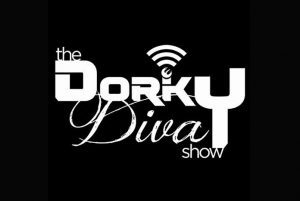
PlayStation 4 started 2019 in a dominant market position as the console leader, but it became clear throughout these last 12 months that Sony has its sights set on 2020 and beyond. This was a transitional year for PlayStation, as the company laid the groundwork for its next generation with hardware plans, executive shake-ups, and by more fully embracing emerging technology like cloud streaming.
PlayStation 5 Starts To Take Shape
The biggest PlayStation story this year was about a system that no one has played, or even seen. The PlayStation 5 is coming next year, and for Sony, that meant starting to seed revelations about the game in slight glimpses. We’ve only grazed the surface of the upcoming console, but we know enough to start understanding its rough contours.
Mostly through a series of Wired interviews with system architect Mark Cerny and new SIE president Jim Ryan, we learned the PS5 will be compatible with PS4 games, use a solid-state drive, and sport a disc drive that supports 100 GB Blu-ray (BDXL) discs. It’s also aiming to support ray-tracing and PSVR, and to be more energy efficient. In terms of software, the UI will let you see more details about friends’ games or even jump into specific portions of a game itself, right from the menu. The next generation controller trades the usual rumble feature for haptic feedback, and promises adaptive triggers that will let developers adjust tension. We got a potential peek at how it may look by way of a patent filing, which appears very similar to a DualShock 4.
Sony played coy for a while with the name and date but eventually did confirm a holiday release window, as well as the final name: PlayStation 5.
The PlayStation 5 And What’s Still To Come
Please use a html5 video capable browser to watch videos.
This video has an invalid file format.
Sorry, but you can’t access this content!
Please enter your date of birth to view this video
By clicking ‘enter’, you agree to GameSpot’s
Terms of Use and
Privacy Policy
PlayStation Skips E3
One of Sony’s biggest decisions in 2019 actually began in 2018. Near the end of last year, the company announced it would be skipping E3 2019. We knew the decision would have a major impact on this year’s show, but we didn’t know just how major until we saw the first PlayStation-less E3 for ourselves.
The show was significantly less crowded without Sony’s presence, and even the company’s competition missed its presence–Microsoft’s Phil Spencer said he wishes Sony had been there. The show may also have been a quieter one due to where we are in the console cycle. Both Microsoft and Sony are preparing for their next launches, and so major releases and announcements have been slowing. But 2020 is fast approaching, and Sony has made no comment on whether it will come back to E3 next year.
This is far from the only factor that’s changing the face of E3, but it’s one of the more significant ones, and when the dust settles the show may be very different. Given that Sony has also seemed to abandon its annual PlayStation Experience shows, the company is making fewer live event appearances in general.
Sony Launches “State of Play” Streams
Likely not coincidentally, just as Sony pulled out of E3, the company started its own streaming program. The “State of Play” streams follow the model of the popular Nintendo Direct presentations–albeit with a more straightforward presentation and less dad humor. Reception to the first State of Play was mixed, but Sony has come into its own with these streaming presentations as part of its marketing efforts.
Among other revelations, this year’s State of Play presentations showed off some of the first footage of the FF7 Remake, debuted Iron Man VR, and gave a release date for The Last of Us Part 2–until it was delayed again, about a month later.
That hiccup aside, Sony seems set on its current approach. If anything keeps Sony away from E3 2020, it will be that it already has an established outreach effort without it. Meanwhile, Microsoft and Nintendo continue to use both streams and stage presentations.
The Last of Us 2 Set For February May
The Last of Us Part 2 is one of the biggest exclusives in Sony’s portfolio, and many fans thought it was destined for this year. As the months went on, though, it became clear that it wasn’t to be. A trailer provided a February release date, finally giving fans of Joel and Ellie a date to mark on their calendars. But not long after, Naughty Dog came out with the sheepish admission that, yes, it would be delayed one more time. The current date stands at May 29, 2020.
What we’ve seen from the game hasn’t been much cause for alarm, and this would appear to be just one more slight delay. The proximity to the PlayStation 5 launch has raised questions over whether it will appear on both platforms, similar to The Last of Us on PS3 and PS4. The same questions linger regarding the platform-exclusive Ghosts of Tsushima, which has gone missing since its debut last year.
Zombies and Timefall
Sony wasn’t without system exclusives this year, but its output was more divisive than usual. Rather than a critically acclaimed masterpiece like God of War or a broad crowd-pleaser like Spider-Man, this year PlayStation 4 had claim to Days Gone and Death Stranding. Both games sported high production values and gained an audience, but the critical reception was notably mixed in each case.
Death Stranding Universe Explained Part 1
Please use a html5 video capable browser to watch videos.
This video has an invalid file format.
Sorry, but you can’t access this content!
Please enter your date of birth to view this video
By clicking ‘enter’, you agree to GameSpot’s
Terms of Use and
Privacy Policy
Days Gone was a great-looking and solidly built open-world game, but critics felt it lacked a strong identity for itself or its biker protagonist, Deacon St. John. Death Stranding was virtually the opposite. The game was widely anticipated as Hideo Kojima’s first independent project after leaving Konami, and it was praised for its ambition and innovative systems, but some critics felt it didn’t click together into a cohesive whole.
Crossing the Streams
One of the most surprising stories this year also remains one of the most mysterious. In May, Sony and Microsoft announced a strategic partnership. Specifically, the two signed a memorandum of understanding to develop future cloud solutions within the Microsoft Azure framework. Sony is also slated to use Microsoft Azure for its own content streaming services. The agreement also mentions a partnership on semiconductors and artificial intelligence.
The partnership was far from PlayStation and Xbox joining forces, however. In fact, it seems most of the PlayStation team was left out of the loop entirely–to the point that managers reportedly had to reassure workers that this didn’t impact their current plans or the development of the PlayStation 5. At this point, we still don’t know exactly what the partnership means. It could remain purely based on background infrastructure, which would remain essentially invisible to most players.
And “Now” For Something Completely Different
That big step with Microsoft may have been hinting at Sony preparing itself for the future in another way. Google Stadia and Microsoft’s own xCloud streaming services were approaching, signaling that cloud gaming looks to be at least part of the gaming landscape for the future. Sony has had its games streaming service PlayStation Now for years, but it’s largely been left out of the conversation that pits Google versus Microsoft in a battle royale.
Are We Ready For Cloud Gaming? Is It Ready For Us?
Please use a html5 video capable browser to watch videos.
This video has an invalid file format.
Sorry, but you can’t access this content!
Please enter your date of birth to view this video
By clicking ‘enter’, you agree to GameSpot’s
Terms of Use and
Privacy Policy
If streaming is the future, Sony doesn’t want to be left out of the loop. In October, the company made some aggressive moves for its PlayStation Now service, including dropping the price to more closely align with Microsoft’s Game Pass subscription service, and adding a rotating selection of more recent first-party games like God of War. It’s not quite a match for the value of Xbox’s Game Pass, which has gotten big this year and may get even bigger in 2020 with the addition of xCloud, but these moves make Sony more nimble and able to respond to the approaching competition from streaming services.
Verdict
2019 has been a year of transition for Sony. Though it remains the market leader in console sales worldwide, aggressive moves from Microsoft have put it a half-step behind in adopting new initiatives like Game Pass. As both companies gear up for the next generation, Sony seems to understand that it can’t rest on its laurels and has started to position itself well for the next year, and the next generation.
All this means PlayStation is primed for a strong 2020. Sony is opening with one of the biggest exclusives in its portfolio. It has made PlayStation Now a viable contender to compete with both Google Stadia and Microsoft xCloud on its own terms. It has found a successful formula for messaging directly to fans with its State of Play streams. And the company is saying all the right things for how to make the PlayStation 5 a successful launch.
| The Good | The Bad |
|---|---|
| PlayStation 5 is well-positioned to start the next generation strong | Skipping E3 gave PlayStation less presence in gamer consciousness |
|
After a rocky start, State of Play streams have found its voice |
TLOU2 delay and mixed Days Gone and Death Stranding receptions meant a less strong first-party showing |
| PlayStation Now has made smart changes to deal with the coming cloud gaming wars | |
























